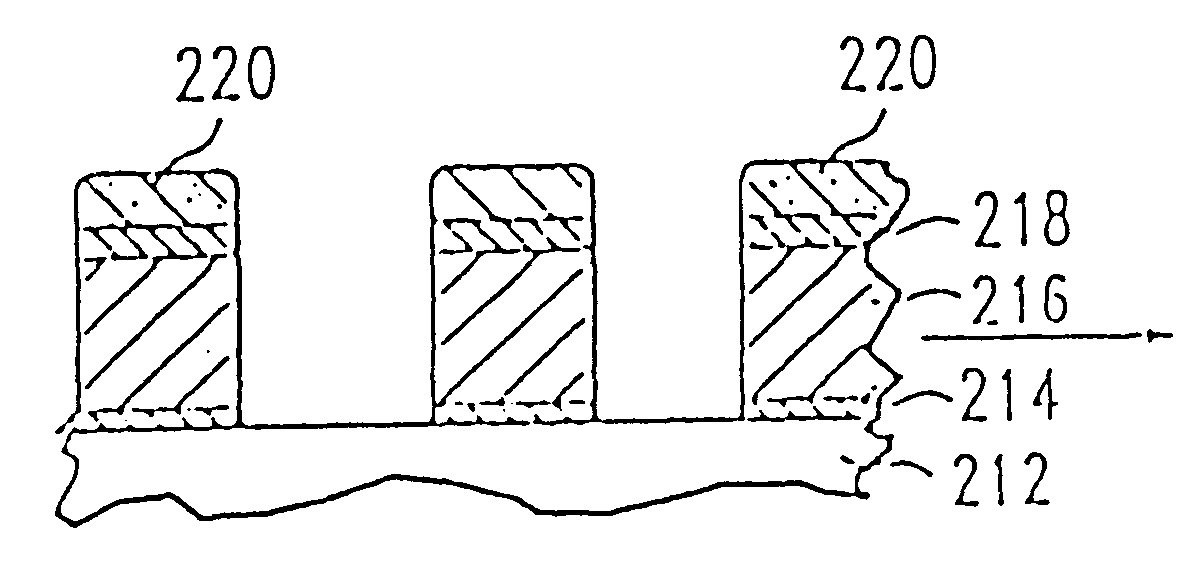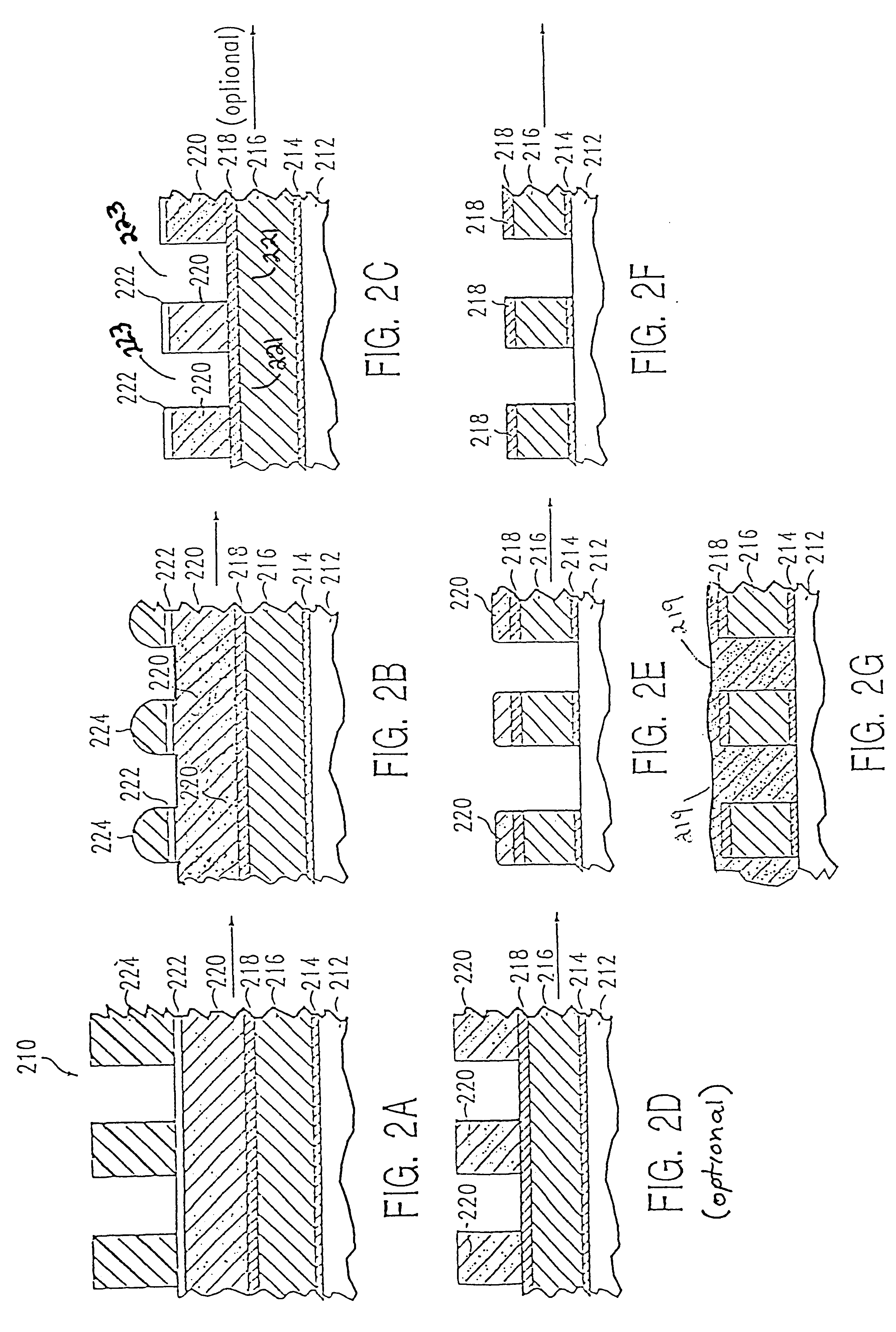Method of pattern etching a low K dielectric layer
a dielectric layer and low k technology, applied in the field of etching of patterned layers, can solve the problems of film oxidation or other corrosion, distortion of pattern, removal of residual silicon dioxide hard masking material,
- Summary
- Abstract
- Description
- Claims
- Application Information
AI Technical Summary
Problems solved by technology
Method used
Image
Examples
second embodiment
the present invention pertains to a specialized etch chemistry useful in patterning silicon-free organic polymeric layers such as low k dielectrics and other organic interfacial layers. This etch chemistry is particularly useful when the conductive material in a multilayered etch stack is copper, or when copper is the conductive fill material used for formation of a contact via, or in a damascene or dual damascene process.
By way of explanation, in a damascene process, the process steps would typically include: blanket deposition of a dielectric material; patterning of the dielectric material to form openings; deposition of a diffusion barrier layer and, optionally, a wetting layer to line the openings; deposition of a conductive layer such as copper, tungsten, or aluminum onto the substrate in sufficient thickness to fill the openings; and removal of excessive conductive material from the substrate surface using chemical-mechanical polishing (CMP) techniques or etch-back techniques....
PUM
| Property | Measurement | Unit |
|---|---|---|
| temperatures | aaaaa | aaaaa |
| temperature | aaaaa | aaaaa |
| feature sizes | aaaaa | aaaaa |
Abstract
Description
Claims
Application Information
 Login to View More
Login to View More - R&D
- Intellectual Property
- Life Sciences
- Materials
- Tech Scout
- Unparalleled Data Quality
- Higher Quality Content
- 60% Fewer Hallucinations
Browse by: Latest US Patents, China's latest patents, Technical Efficacy Thesaurus, Application Domain, Technology Topic, Popular Technical Reports.
© 2025 PatSnap. All rights reserved.Legal|Privacy policy|Modern Slavery Act Transparency Statement|Sitemap|About US| Contact US: help@patsnap.com



